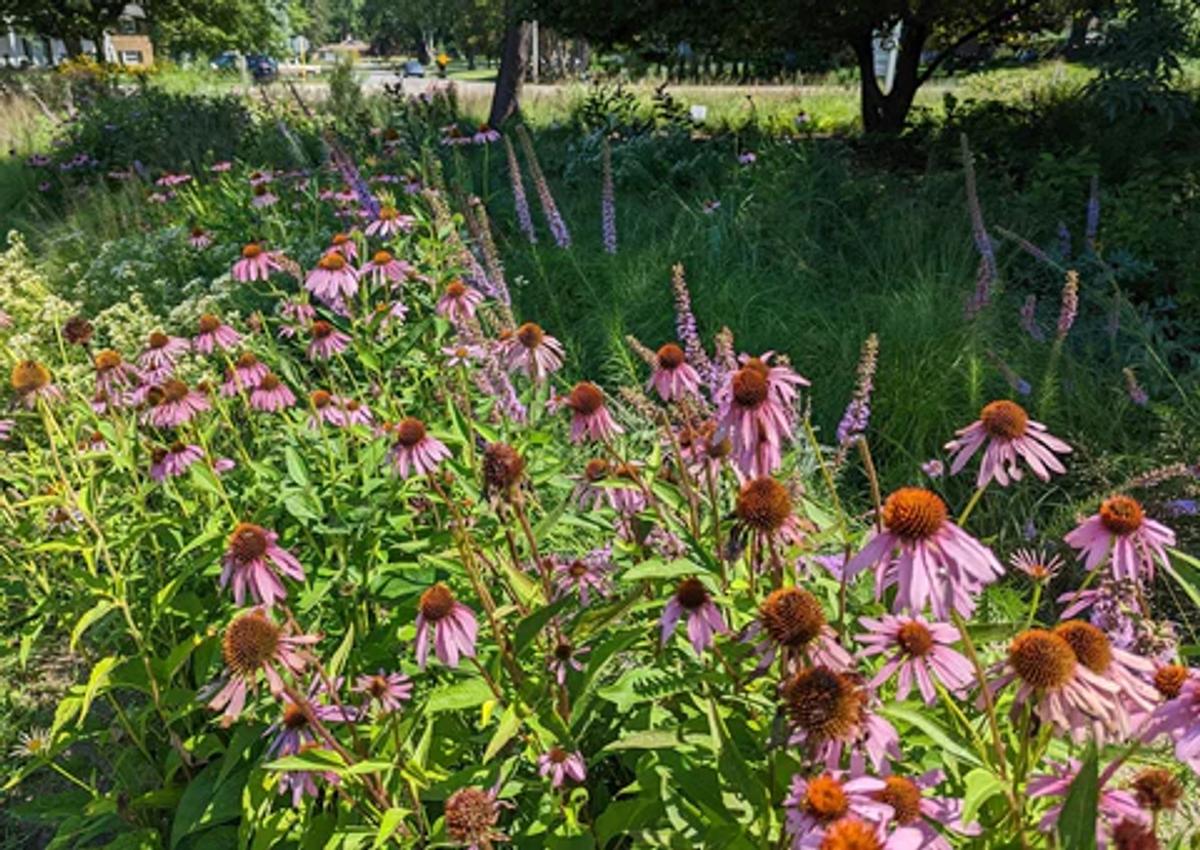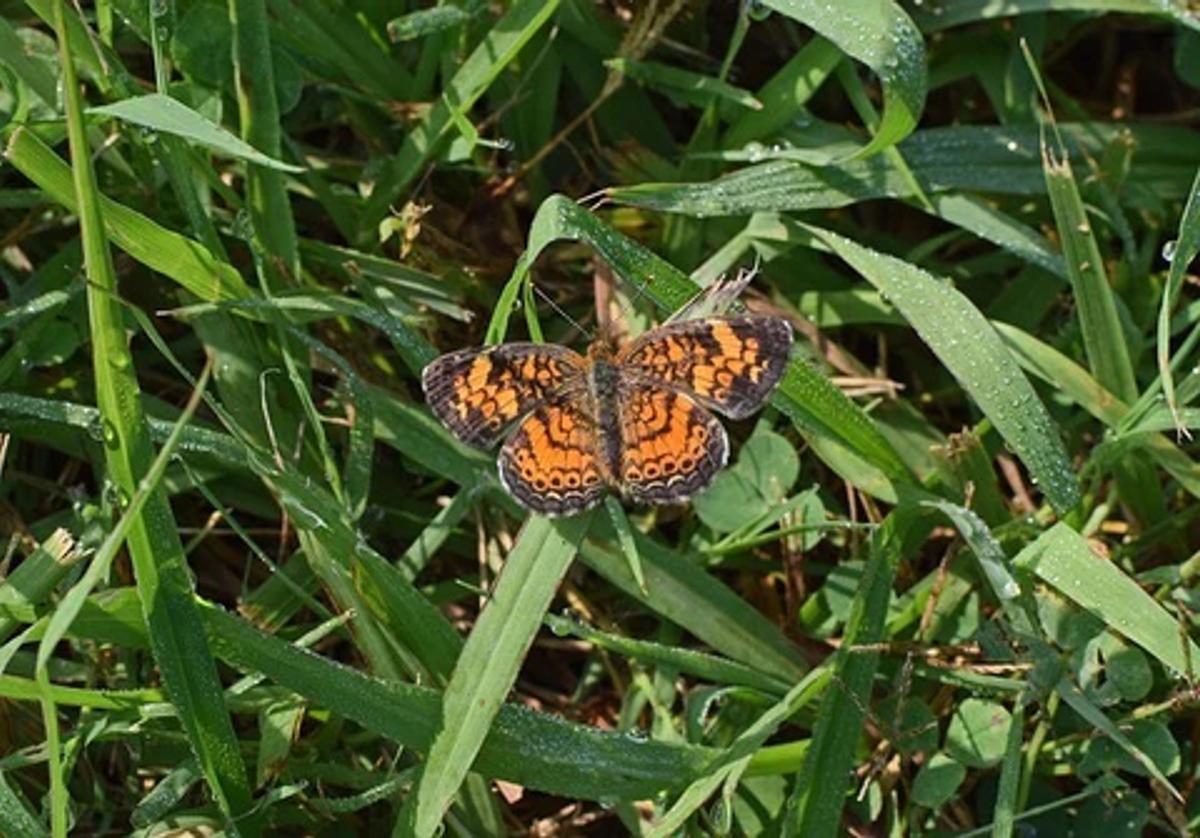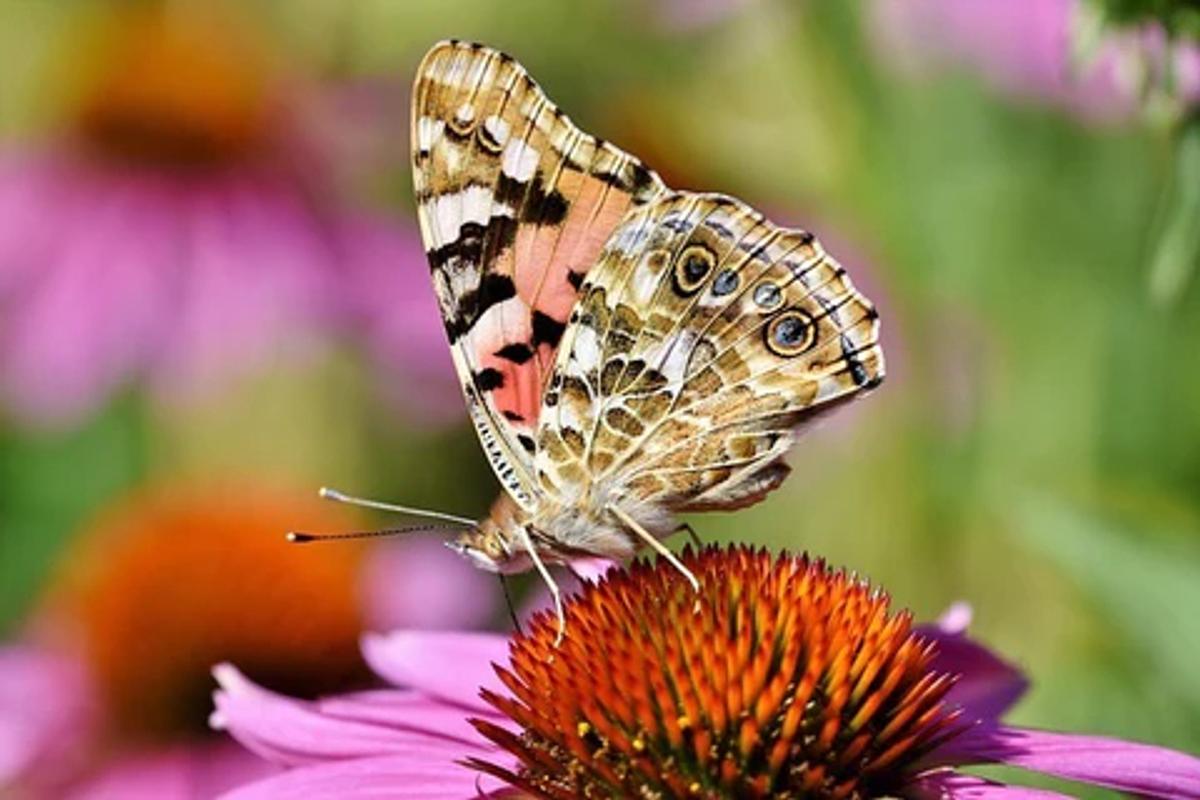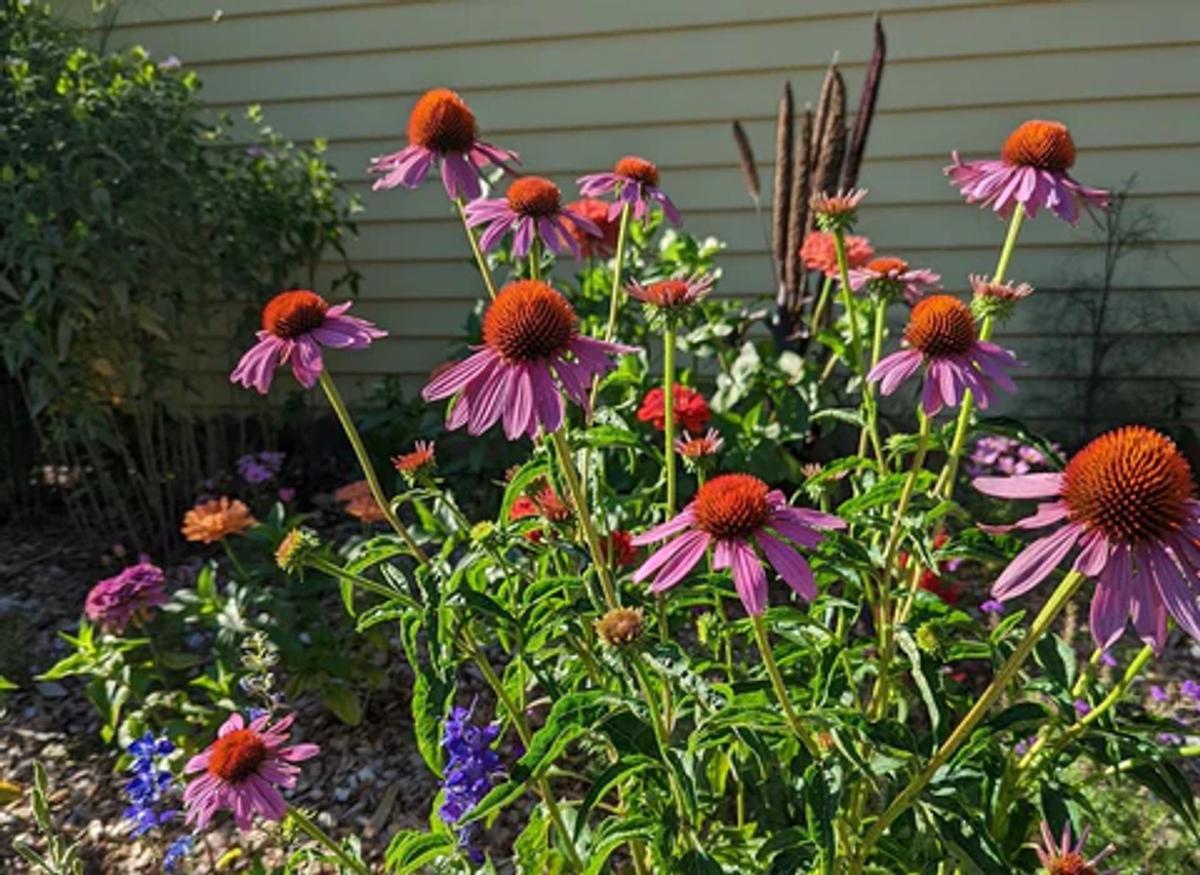Why are Purple Coneflowers (Echinacea purpurea) important?


Learn more about Purple Coneflower (Echinacea purpurea) and the benefits it brings to pollinators and your yard!

Welcome to "Know Your Natives!" - a series exploring the wonders of native plants across the United States. In each post, we'll dive into the ecology, appearance, and growing requirements of individual native plants, while also providing some fun trivia and highlighting their importance for the environment. Whether you are new to natives or a botanical pro, we hope this series will help you get a better sense for the benefits of using native plants in landscaping and gardening: from their ability to support local ecosystems to their stunning visual appeal. Join us on this journey to discover the diversity and value of native plant species and learn how you can incorporate them into your own green spaces.
As a company that got its start in Ohio, there may be no better plant to kick off this series than Purple Coneflower (Echinacea purpurea).

An Introduction to Purple Coneflower
Purple coneflower (Echinacea purpurea) is an herbaceous perennial plant native to the central and eastern United States. It is known for its distinctive showy purple flowers with spiny cone-shaped centers, which bloom from midsummer to early fall. The plant itself can reach a height of up to three feet and has lance-shaped leaves with a coarse texture. Purple coneflower is a popular native plant for landscaping and gardening due to its hardy nature, long-lasting blooms, and ability to attract butterflies, bees and other pollinators. As a native plant, Echinacea purpurea plays an important ecological role by providing food and habitat for a variety of wildlife species, including bees, butterflies, and birds. It is also a highly valued plant in both traditional and modern medicine, as it is believed to have a range of health benefits, including immune system support and anti-inflammatory properties.

Purple coneflower is a popular plant in native and ornamental gardens alike. Many color and flower morphs are now available, but our plants are the offspring of native prairie inhabitants. This makes them adapted to tough conditions and better for pollinators than cultivars. Spent flowers turn black with seeds, adding winter interest and feeding goldfinches who relish the free meal. Echinacea happily spreads by seed, so remove seedlings in the spring to keep it in check.
At-A-Glance - Purple Coneflower
Common Name(s): Purple Coneflower; Eastern Purple Coneflower; Kansas Snakeroot; Hedgehog Coneflower; Purple Echinacea
Scientific Name: Echinacea purpurea
Type: Herbaceous Perennial
Root Structure: Fibrous Root System
Sun Exposure: Partial Shade to Full Sun (At least 6 hours a day)
Soil Moisture: Dry once established. Moist during first year.
Soil Types: Well draining sandy, loamy, and clay soil.
Other Benefits: Deer resistant; well behaved; drought tolerant
Bloom Color: purple
Bloom Time: early summer to early fall for several weeks
pH: Slightly Alkaline (6.5 to 7.0)
Native Range: Broadly native or naturalized in most states east of the Rockies.

Range Map: Created by the Biota of North America Program (BONAP) and based on historical species records, this range map shows you a great overview of the distribution of Purple Coneflowers in North America. Brown indicates not state present; Greens indicate county listed; Yellows and Oranges indicate rarity. The species is even more widely distributed than suggested here, including in Minnesota and the Dakotas.

Style Guide
It's no accident that Purple Coneflowers are already so popular among traditional and native garden enthusiasts alike. It is a beautiful native plant that can add a touch of vibrancy and elegance to any garden.
Color: Flower heads feature striking pinkish-purple petals that surround a spiky, bronze-colored center cone that contrasts with its dark green leaves. This unique color combination can create a stunning focal point in a garden bed.
Shape: The flowering stems are long and slender, creating a graceful, occasionally drooping shape that adds movement to a garden.
Height: Purple coneflower can grow up to 3-4 feet tall, making it a great choice for creating a dynamic vertical element in a garden design.
Wildlife Attraction: Purple coneflower is a favorite flower of bees, butterflies, and other pollinators, which can add a lively buzz of activity to a garden.
Winter Months: Seed heads are a beautiful addition to the winter landscape. Snow will accumulate dramatically on the blackened cones and will be visited by birds looking for a cold weather snack early winter on.
Here are a few ideas as to how you could incorporate Purple Coneflowers in your own garden:
Use it as a focal point: Plant several purple coneflower plants in a group to create a bold focal point in a garden bed. Surround them with lower-growing native plants in complementary colors to create a dynamic and cohesive look.
Mix with other native plants: Purple coneflower pairs well with a variety of other native plants in garden beds or perennial borders, such as Black-Eyed Susans (Rudbeckia hirta), Nodding Onion (Allium cernuum), Goldenrods (Solidago species), and Asters. Mix and match these plants to create a colorful and diverse garden that is both beautiful and beneficial to wildlife. Combining purple coneflower with a native grasses, such as little bluestem (Schizachyrium scoparium) or switchgrass (Panicum virgatum), can create a beautiful textural contrast.
Use for cut flowers: Purple coneflowers make great cut flowers, with its long-lasting blooms and vibrant color. Add it to a vase with other native flowers for a beautiful and eco-friendly arrangement.


Planting Instructions & Care
Echinacea purpurea is a hardy and low-maintenance perennial plant that is relatively easy to cultivate. Here are some tips on how to successfully cultivate this plant:
Site selection: Choose a sunny location with well-draining soil. Purple coneflower prefers strong sunlight but can tolerate less sun and some light shade. Avoid planting in areas with standing water or overly wet soil.
Planting: Plant purple coneflower in the spring or mid to late fall. Dig a hole that is slightly larger than the root ball and place the plant in the hole. Backfill with soil, tamp it down, and water thoroughly.
Watering: Purple coneflower is drought tolerant and does not require much water once established. Water regularly during the first growing season to help the plant establish its roots.
Collecting Seeds: Flower heads provide seeds in late fall and freely self seeds if not dead-headed. Seeds can be collected in the fall after the flowers have faded and the seeds have dried on the plant.
Fertilization: Purple coneflower does not require much or any fertilizer. If you choose to fertilize, do so sparingly with a balanced fertilizer in the early spring.
Deadheading: Deadhead spent blooms to promote continuous blooming throughout the season. Leave some of the seed heads on the plant in the fall to provide food for birds and other wildlife.
Division: Purple coneflower can be divided every 3-4 years in the early spring to prevent overcrowding and promote healthy growth.
Pest and disease control: Purple coneflower is generally resistant to pests and diseases but can face occasional problems. Monitor for aphids, spider mites, and powdery mildew, and treat as needed.
Species Relationships

Purple coneflower is a favorite of many species of bees, butterflies, and other pollinators, including bumblebees and swallowtail butterflies. The flowers provide a source of nectar and pollen, which helps to support the health and diversity of these important pollinators. The seeds of purple coneflower are a valuable source of food for many species of birds, including goldfinches, sparrows, and chickadees. By providing a food source for these birds, purple coneflower helps to support the health and diversity of local bird populations.
As Host Plant

In addition to these services, Echinacea purpurea is a host plant for several species of butterflies and moths. Host plants are those on which certain species of butterflies or moths lay their eggs, and their larvae then feed on the leaves and stems of the plant.
Some examples of butterflies and moths that use purple coneflower as a host plant are:
Silvery Checkerspot (Chlosyne nycteis): The larvae of the Silvery Checkerspot butterfly feed on the leaves of purple coneflower.

Painted Lady (Vanessa cardui): The larvae of the Painted Lady butterfly feed on the leaves and flowers of purple coneflower.
Southern Skipperling (Copaeodes minima): The larvae of the Southern Skipperling butterfly feed on the leaves stiff stems of purple coneflower.
Grammia (Grammia spp.): Several species of Grammia moths use purple coneflower as a host plant. The larvae feed on the leaves and stems of the plant.
By planting purple coneflower in your garden or landscape, you can help to support these and other species of butterflies and moths, as well as the local ecosystem as a whole.

Other Benefits for Your Yard
Soil health: Purple coneflower has a deep taproot that helps to aerate and break up compacted soil. The plant also releases organic matter into the soil as it decomposes, which helps to improve soil health and fertility.
Companion plants: Purple coneflower can be planted with a variety of other native plants to create a diverse and mutually beneficial plant community. For example, planting purple coneflower with milkweed can help to support monarch butterflies, as milkweed is the only plant on which monarchs lay their eggs.
Insect pest control: Purple coneflower contains compounds that are toxic to some insect pests, including Corn Earworms and Japanese Beetles. By planting purple coneflower in and around vegetable gardens, it can help to control these pests and reduce the need for chemical insecticides.
Trivia
The scientific name Echinacea purpurea is derived from Greek and Latin words. "Echinacea" comes from the Greek word "echinos" which means "hedgehog" or "sea-urchin," and refers to the spiny or prickly cone-shaped central disk of the flower head, which resembles a hedgehog. "Purpurea" comes from the Latin word "purpureus," meaning "purple," which refers to the flower's color. So, Echinacea purpurea literally means "purple hedgehog" or "purple sea-urchin," referring to the plant's distinctive purple cone-shaped flowers that have a spiny, cone-shaped center disk.

Summary
If it's native to your area, I would recommend Purple Coneflower because it:
- is easy to grow and maintain
- has a highly attractive appearance
- will directly support a wide range of wildlife and
- pairs well with many other native perennials

Share this article


